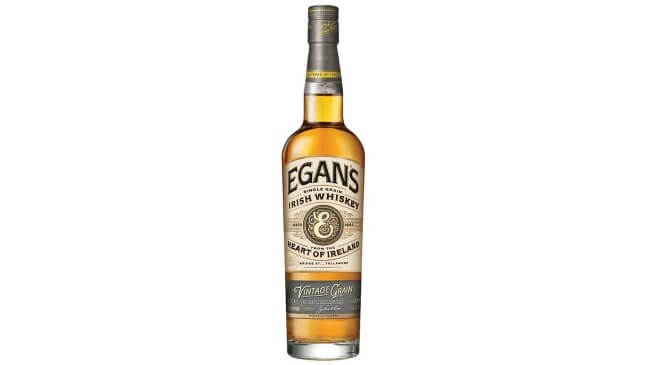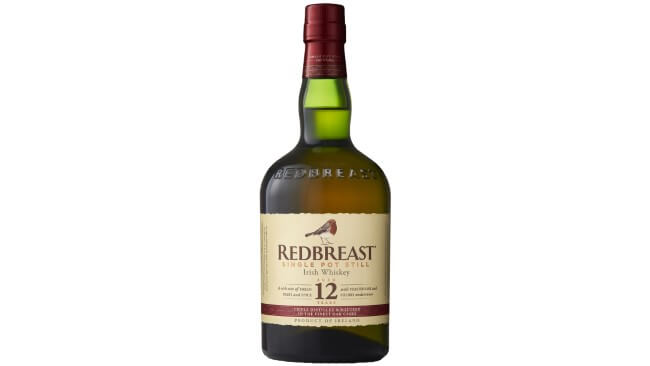Cocktail Queries: What are the Different Styles of Irish Whiskey?

Cocktail Queries is a Paste series that examines and answers basic, common questions that drinkers may have about mixed drinks, cocktails and spirits. Check out every entry in the series to date.
The American whiskey market has always seemingly had something of an odd relationship with Irish whiskey. Overall, it’s a style that for many average drinkers conjures memories of college-era debauchery, thanks to the ubiquitous and inexpensive nature of some of the category leaders, so frequently used for blending inoffensive mixed drinks. As a result, many rank and file spirits consumers have never really afforded Irish whiskey the respect or esteem that comes more naturally to a category like scotch whisky, despite the many similarities between the two. And yes, the Irish do tend to keep the “E” in “whiskey” if you were wondering.
Then there’s the upcoming elephant in the room: Saint Patrick’s Day. Outside of say, Cinco de Mayo, there’s perhaps no other widely celebrated holiday in the U.S. more associated with a single, specific style of spirit. This creates a type of Irish whiskey drinker, which is the culturally curious one–the people who get interested in Irish whiskey roughly once a year in March, but rarely reach for it at other times. I confess, I sometimes fall into this category myself, despite my genuine appreciation of Ireland’s classic spirit.
But as is so often the case, just saying “Irish whiskey” is really being overly broad already–the category is far more than just its most common expressions, which are the inexpensive blends. There are four major categories within the title of Irish whiskey: Blended whiskeys, single malt, single grain, and the most genuinely Irish spirit of them all, single pot still Irish whiskey.
How do they all differ? What are some good examples to taste of each? Allow us to explain.
Blended Irish Whiskeys

The most common, ubiquitous Irish whiskey products on the shelf all have a tendency to be blended whiskeys. So what does “blended whiskey” mean in this context? Well in short, when the Irish refer to “blends,” they’re talking about a combination of both grain whiskey and malt whiskey in one bottle.
In practice, this can mean very complex bending operations, bringing together both grain whiskey (produced from anything other than malted barley) and malt whiskeys (solely malted barley) from many different source distilleries. All of these various whiskeys have been aged for at least three years minimum by law in wooden casks, though distilleries are free to choose those casks as they see fit. Many are matured in re-used American oak previously used to mature bourbon, but some may also incorporate elements in the blend that were matured in casks such as sherry, port, or even freshly charred “virgin” oak.
All of these elements are blended together to achieve the intended profile, meaning that the final flavor profile tends to reflect both the malt and grain whiskey elements. This likewise means that two “blended Irish whiskeys” can be extremely different and intended to very different markets. A lightly aged, primarily grain whiskey will likely be inexpensive and easy drinking, used mostly for mixing, whereas a primarily malt whiskey blend with more age on it might be positioned as a more premium, expensive product. Blended Irish whiskey thus runs the gamut from bottom to top shelf.
Common blended Irish whiskeys include the ultra-ubiquitous Jameson, along with similar blends from Powers or Bushmills, and more craft-y stalwarts from distilleries like Dublin’s Teeling Whiskey.
Single Malt Irish Whiskeys

Single malt Irish whiskey has much in common with the famed Scottish single malts, with a definition that implies some of the same things. As in the scotch world, the word “single” means that this is the product of a single distillery, which is a distinction one has to make in an industry where most of the classic blends are drawing from many distilleries from all over the country. The word “malt,” in a designation, means that the product is legally required to be made from nothing less than 100% malted barley–this is effectively an old shorthand for quality, as malted barley was historically the more expensive source of fermentable sugars than other grains. Single malt whiskey, then, essentially is used as a standard-bearer for a particular distillery’s own taste profile: You’re meant to be able to taste a flagship single malt and deduce the distillery philosophy from the choices they’ve made in aging and finishing it.
Those choices may include what types of barrels they use for the initial aging period–traditionally reused American oak, but newly charred oak is slowly becoming a more common tool used in both Ireland and Scotland. Single malt whiskeys can also be entirely matured or finished in other styles of cask such as sherry, port, sauternes or standard wine casks, or even spirits casks that previously held beer. Single malts can also blend these cask finishes together, provided it’s all 100% malt whiskey from the same distillery, and still use the term “single malt.”
In general, though, a typical Irish single malt will likely be richer, fruitier and fuller in body than the classical, lighter blends thanks to the lack of grain whiskey–though they may still read as lighter in profile than many single malt scotch whiskies, given that many Irish single malts are still triple distilled, and thus inherently less intense in flavor. They’re also unlikely to be notably smoke forward, as the use of peat-dried malt is considerably less common in Ireland than it is in Scotland. Irish single malts, like their Scottish cousins, are traditionally distilled in pot stills, which yield a more robust spirit.
Common Irish single malts include brands such as The Irishman Single Malt, Knappogue Castle, Bushmills Single Malt, Glendalough Single Malt, or Dingle Single Malt.
Single Grain Irish Whiskeys

The idea of “single grain whiskey” as a concrete style is a pretty new one, describing a product that has always existed, but rarely been consumed on its own or sold commercially until more recently. As the name would imply, “single grain” is the inverse of single malt–still the product of a sole distillery, but now made with anything but malted barley. This includes literally every other grain, from corn and wheat to rye, oats, and beyond.
Historically, grain whiskeys of this nature have been used in the big, commercial blended Irish whiskeys as a way to achieve the desired balance between malty richness and lighter grain whiskey flavors. One of the reasons they’re lighter on the palate is that these grain whiskeys are typically being distilled on large column stills rather than the less efficient pot stills, which yields a more concentrated spirit that sacrifices more of the flavor compounds we call congeners. They are triple distilled to a relatively high distillation proof, stripped of most impurities (and a degree of flavor), and then aged and used to give blends their classical approachability.
In recent years, however, there has been more curiosity about the flavor of grain whiskey itself, outside of its traditional role in blended whiskeys. This has led to more distillers experimenting with aging grain whiskeys on their own for longer periods of time, or giving them secondary cask finishes that are more akin to single malts. The market for these high-end, premiumized single grain whiskeys is still effectively in its infancy, but it is a growing niche in the Irish whiskey world.
Prominent single grain Irish whiskey brands include Kilbeggan, Teeling Single Grain, and Egan’s Vintage Grain.
Single Pot Still Irish Whiskeys

And finally, we come to Ireland’s most unabashedly original contribution to the whiskey world: Single pot still whiskey. This is a style that is only legally produced in Ireland itself, though the difference from single malt whiskey in particular is subtle.
Single pot still whiskey traces its origin to Irish distillers’ frustration with high excise taxes on their whiskey in the 1800s, particularly the taxes they were paying on malted barley. Not wanting to replace that malted barley with other grains, some distillers began experimenting with adding a portion of unmalted, “green” barley to their mashes, which didn’t require the payment of the tax. Purely conceived as a cost-cutting measure, the distillers came to find that when used in the right quantities, the unmalted barley had a dramatic contribution to the final flavor profile that was actually desirable. As the name would imply, these are distilled solely in traditional pot stills.
The actual flavor of that green, unmalted barley is truly unique–it has a distinctly grainy but also spicy quality to it that evokes peppercorns just as readily as it does crisp cereal breadiness and steel cut oats. Folded in with the sweet, fruity maltiness of traditional malted barley and the delicate oak and vanilla of reused American oak, it creates the classic Irish single pot still–previously called “pure pot still” in years past–whiskey profile. These whiskeys have a certain, ineffable wildness to them that to me, most perfectly captures the spirit of the country itself. As a result, single pot still whiskey is often what I personally turn to, when the particular Irish whiskey mood strikes me.
Prominent single pot still Irish whiskey brands in the market include the well-known likes of Redbreast, Green Spot/Yellow Spot, Glendalough Pot Still and even Jameson Single Pot Still. As you might expect, as this style becomes better known and understood, more distilleries are adopting it as a point of national pride.
So this St. Patrick’s Day, remember that the suggestion to try some “Irish whiskey” is really an invitation into a wider whiskey world.
Jim Vorel is a Paste staff writer and resident liquor geek. You can follow him on Twitter for more drink writing.







































